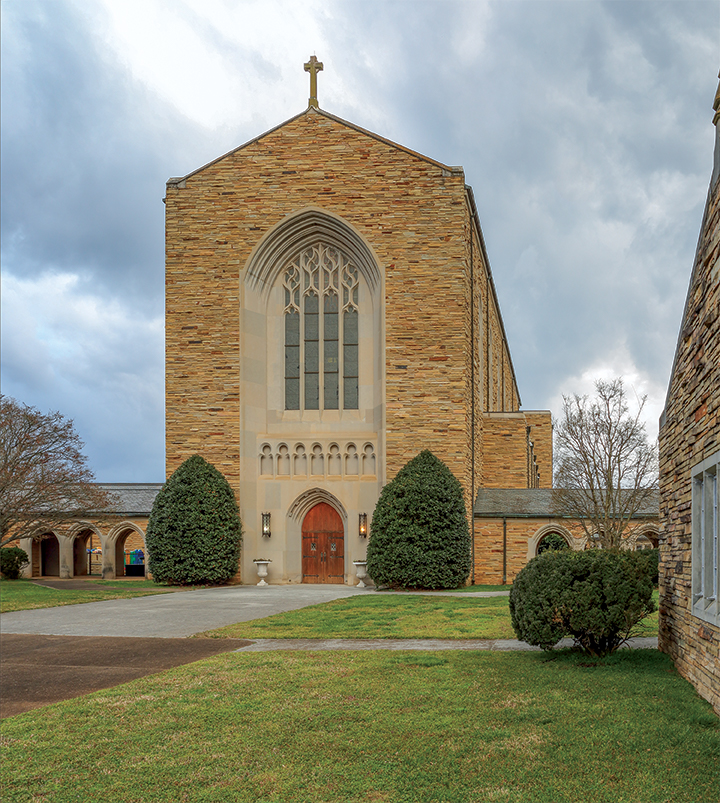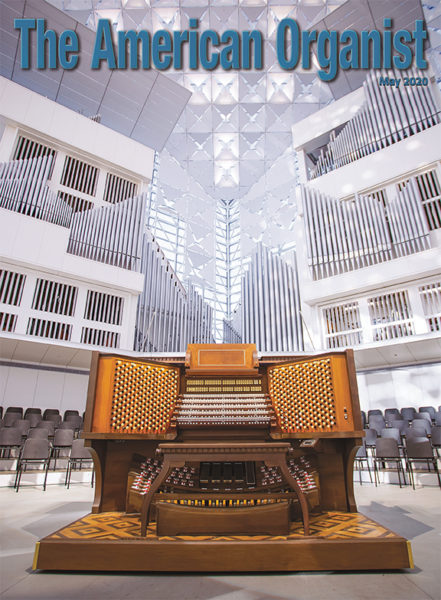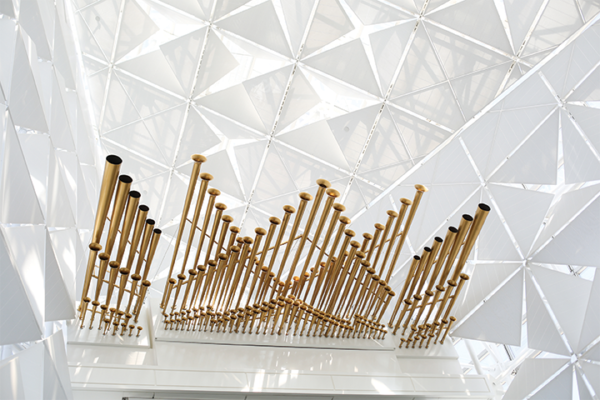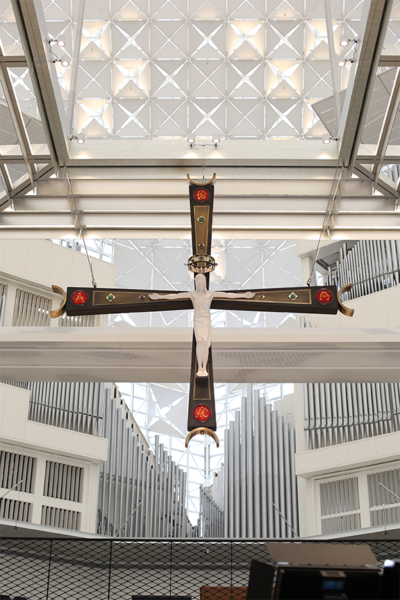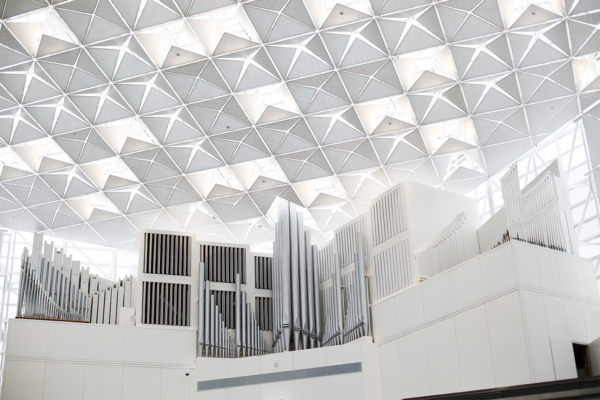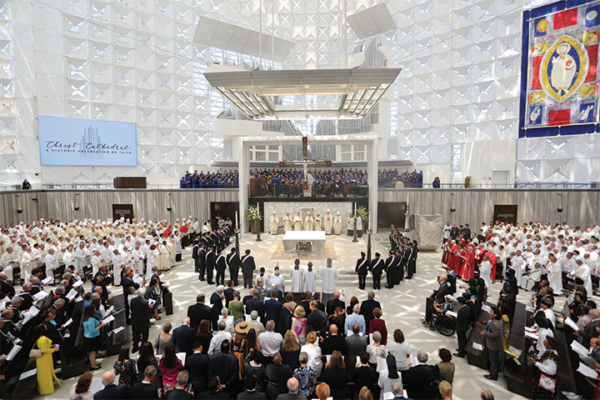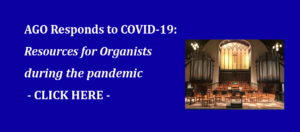First Cumberland Presbyterian Church
Chattanooga, Tennessee
Allen Organ Company • Macungie, Pennsylvania
by Jeff Ayers
Stop List
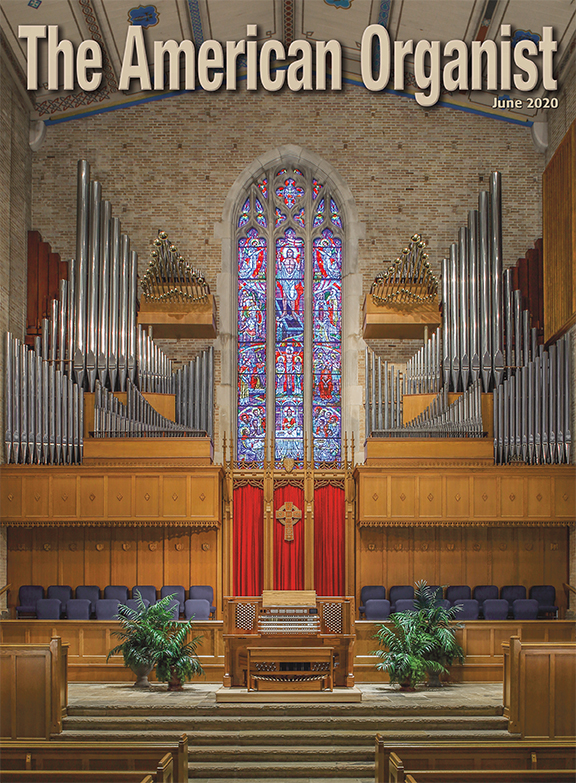
When entering the Woodmore neighborhood of Chattanooga, Tennessee, observers will notice a large stone Gothic structure with soaring heights and stunning architecture. Upon walking into First Cumberland Presbyterian Church, you will immediately notice the 70-foot-tall brick walls, stone floor, hand-painted ceiling, and the organ, strikingly flanked by stained glass windows and pipework.
For more than 40 years, Bruce Clark has served as the organist at First Cumberland Presbyterian Church. In 1980, he oversaw the installation of the 48-rank Fratelli Ruffatti pipe organ that originally included approximately 40 electronic voices to help fill out the specification. After two lightning strikes, the electronic voices were no longer serviceable, and repair parts were unavailable.
The church music committee began looking at various solutions to deal with the failing pipe organ. The musicians and committee knew that quality digital voices would be required to fill the gaps of the pipework and provide color and versatility. They also wanted a technologically advanced, high-quality console that would be capable of controlling all voices and would fit aesthetically within the beautiful sanctuary.
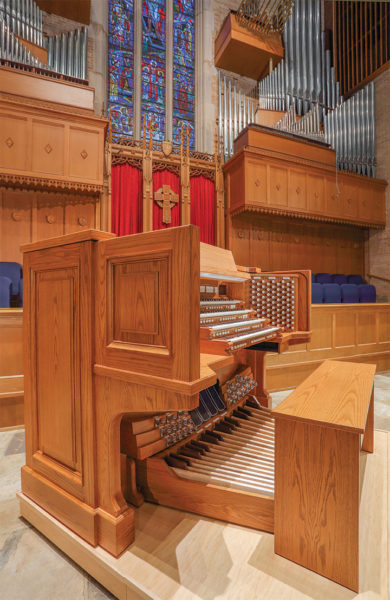 The Allen Organ Company of Macungie, Pennsylvania, was ultimately selected to build the new four-manual console to control the 48 ranks of Ruffatti pipework and an additional 100 ranks of digital stops.
The Allen Organ Company of Macungie, Pennsylvania, was ultimately selected to build the new four-manual console to control the 48 ranks of Ruffatti pipework and an additional 100 ranks of digital stops.
Jeff Ayers, president of Allen Organ Studios, was the consultant on the project and oversaw the design and project management during the installation of the new pipe-combination organ. Alan Buchanan, lead engineer with Allen Organ Studios, was lead installer. As with all pipe-combination projects, it is imperative that the digital ranks be voiced and scaled correctly for flawless integration with the existing pipework in order to create a cohesive ensemble. The church’s musicians, together with the Allen Organ Studios team, worked tirelessly to create not only a cohesive instrument, but one that would also be a musical showpiece for the area.
Bruce Clark petitioned for an instrument that would have enough variety of colors to play the vast repertoire performed by the dynamic music department of First Cumberland Presbyterian Church. Internationally acclaimed concert organist Hector Olivera developed an eclectic specification for the Allen Organ Company with samples incorporating the different schools of organbuilding. According to Olivera, “My vision for this organ’s specification was based on two things: the church service and the written organ literature. I wanted a certain number of 8′ diapasons as well as fiery reeds, solo color reeds, a beautiful variety of flutes, and lots of string celestes.”
The massive oak console includes 147 rosewood drawknobs, rosewood manual and pedal sharps, and elegant Skinner-style key cheeks. Allen’s exclusive GeniSys Controller with color touch screen offers the organist ultimate control, including 128 memory levels, hundreds of additional sounds, and other advanced features.
Due to the sonic demands of pipe-combination organs, a sophisticated audio system was strategically designed and placed within the chambers to create the effect of additional ranks that flawlessly blend with the existing Ruffatti pipes. The Allen Organ Company also designed a new solid-state switching system to replace the original relay system.
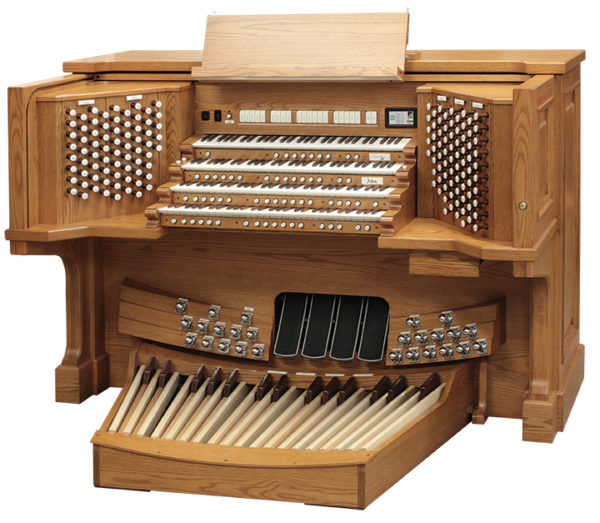
With installation completed in March 2019, music director Gerald Peel reports that the new console and Allen digital additions have far exceeded their expectations. The integrity of the sounds, as well as the versatility of the new instrument, has made available a greater variety of music and styles for the music program at First Cumberland Presbyterian. This versatility has also provided new opportunities for artists and ensembles, including twelve weeks of special programs featuring the organ in solo and ensemble concerts. These events culminate with a performance by Hector Olivera in fall 2020. Bruce Clark is thrilled with what this new instrument brings to worship. The articulate tones of the Ruffatti and the variety of 8′ digital voices, lush strings, and ample solo voices provided by Allen Organ make for an instrument that is unrivaled in the region.
